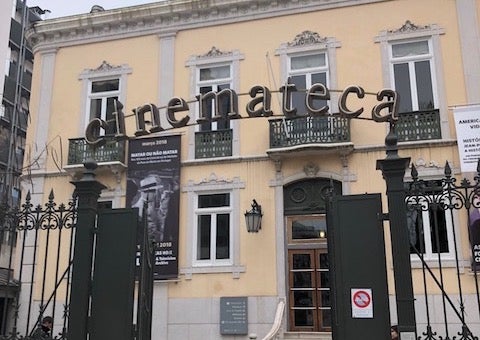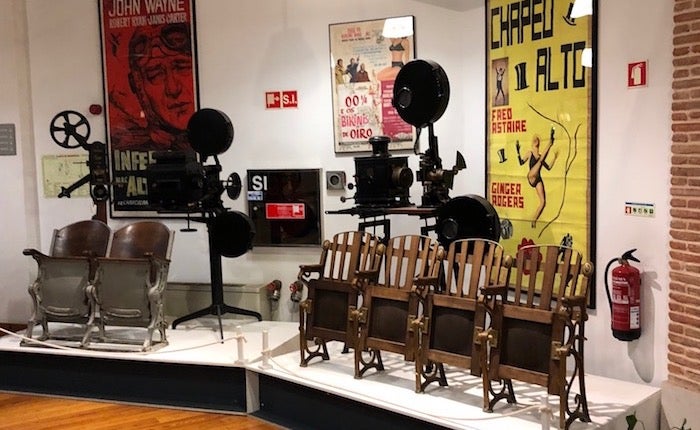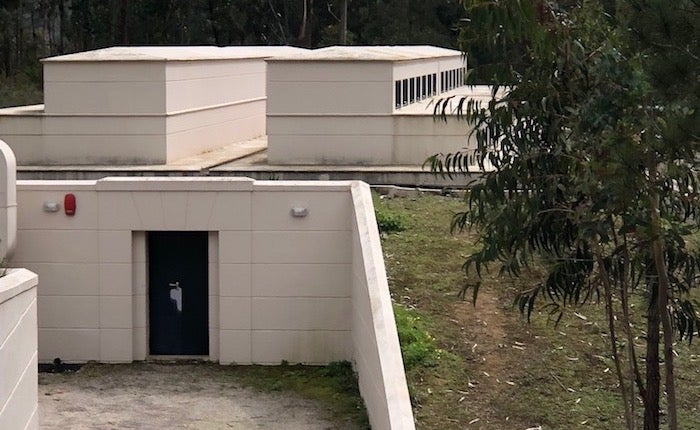
Cinemateca Portuguesa
It was hard to believe, but it had been more than 26 years since I last visited the Cinemateca Portuguesa in Lisbon. So, when Cinemateca Director José Manuel Costa asked me to introduce a program of 26 UCLA restorations and present a lecture in their ongoing series, “Film Archives Today,” a part of the Cinemateca’s 70th anniversary celebration, I jumped at the chance. We arrived in Lisbon in the first days of March, greeted by rain and unusually cold weather, but given that Portugal, like California, has suffered years of drought, I was happy to see the much-needed precipitation.
The original Cinemateca Nacional was founded in 1948 through an act of the Parliament, joining the International Federation of Film Archives (FIAF) in 1956. It began regular film programming in 1958. A 1980 law changed the name to Cinemateca Portuguesa and gave the institution full legal and fiscal autonomy and set up the mechanism for a national archive of moving images. In the 1990s, the Cinemateca Portuguesa became a leader in the European film archives movement, hosting the LUMIERE Project from 1991 to 1995, and then co-founding the ACE (Association of European Cinématèques). I first visited Lisbon in 1989 when the Cinemateca hosted the annual FIAF conference, and returned in 1992 with a program from George Eastman Museum.

The retrospective at the Cinemateca encompassed UCLA restorations from 1977-2015, included both older projects by former UCLA Preservation Officer Robert Gitt, as well as work produced by current Head of Preservation Scott MacQueen and his team. Initially, there had been some debate because the Cinemateca expressed a distinct preference for auteurist classics by Billy Wilder, Cecil B. DeMillle, John Ford and Howard Hawks, while our recent work has been more focused on lesser-known noirs, programmers and exploitation films. The series therefore opened with Wilder’s American debut, The Major and the Minor (1942), soon followed by the delightful pre-Code comedy, Bachelor’s Affairs (1932); the B film noir, The Chase (1946); and Fox’s biopic of Jewish gangster Arnold Rothstein, Now I’ll Tell (1934); all of which were greeted as discoveries by a dedicated local audience of cinephiles.
The Cinemateca’s administrative offices are situated in a beautiful 19th-century patrician home just off Lisbon’s elegant thoroughfare, the Avenida da Liberdade. Lisbon’s architecture is famous for its use of tiles on both exterior walls and interior courtyards, and the Cinemateca is no exception, its magnificent stairwell featuring Moorish columns and intricate tile patterns. Behind the original structure, acquired in 1980 from two elderly sisters, the Cinemateca built a large cinema and a smaller screening space for lectures and specialty films. The hallways serve as a cinema museum, including projectors, posters and other movie memorabilia, while a café-restaurant with a rooftop garden and cinema bookshop are located above the theaters.

On our last full day in Lisbon, I also had the opportunity to tour the Cinemateca’s conservation center. Located near the village of Bucelas, approximately 40 kilometers northwest of the capital, the archive (Arquivó Nacional das Imagens em Movimento) was built in 1996 on 20 acres of wooded land. Resembling a series of Portuguese farm houses that blend into the landscape, the center houses over 40,000 titles in four large vaults for b&w masters, color masters and projection prints. Most importantly, and in keeping with the newest science on long-term preservation of celluloid, the materials are stored at 30% relative humidity. The Cinemateca’s nitrate collections are stored in a separate building with 56 vaults, maintained at 10ºC, 30% RH. At the moment, they are building new vaults in anticipation of receiving all the film materials produced by Portugal’s state-owned television stations, before they transitioned to video production in the late 1970s.
The Cinemateca also maintains one of the last fully functioning analog film laboratories in Europe. The Cinemateca’s lab includes optical printers that can handle significant nitrate shrinkage, two contact printers, a 16mm printer and a Cineric wet gate 4 K scanner. However, they also have an ARRI laser scanner that allows them to film out new 35mm negatives from restored digital files – a toy I would love to have for UCLA. Unfortunately, like almost every film archive in the world, the Cinemateca conservation center is seriously understaffed. The Cinemateca’s Vice Director, Rui Machado, told me that they are trying to attract film preservation work from commercial sources, in order to produce earned income to help support staff operations.

Once one of the most generously funded archives in Europe, I learned in discussions with José Manuel that the Cinemateca has recently had to absorb very serious funding cuts; government funding comes from a tax on cinema tickets, which has dropped as the exhibition market has shrunk. Funding seems to be a worldwide problem, one we at UCLA Film & Television Archive know all too well. But, like our staff, our Portuguese colleagues soldier on for the love of cinema.
< Back to Archival Spaces blog






 Mobile Navigation
Mobile Navigation

